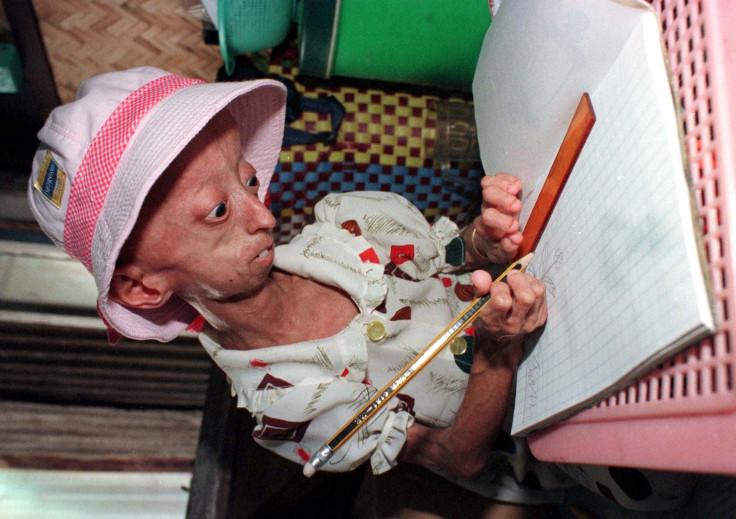Benjamin Button Disease: The Reason Kids With Progeria Experience Premature Aging, Look 10 Times Their Age

Last year, the “real Benjamin Button” died after a battle with a rare genetic disorder known as progeria. The 17-year-old was diagnosed with the disease at only 22 months old, and though he died while he was still in his teens, he appeared to be decades older than he really was — possibly well into his 80s, even.
Progeria is a premature aging disease, in which children begin aging quickly from a very early age — experiencing joint pains, brittle bones, and cardiovascular problems within a few years — and die by the time they’re in their late teens or 20s. It’s a genetic disorder that until recently wasn’t fully understood by scientists; while they’re aware of progerin, the abnormal protein that causes the disease, they’re not entirely sure how it works.
In a new study published in Genes & Development, a group of researchers at the Max F. Perutz Laboratories of the University of Vienna and the Medical University of Vienna examined how progeria develops. They pinpointed and described a previously unknown mechanism that offers clues to its development — and also potential new treatment pathways.
The researchers focused primarily on how progerin causes the disease. The protein is a mutant version of lamin A, which is essential for the nucleus to function in cells. And in progeria cells, there is less of a protein known as LAP2-alpha — which interacts with lamin A — than healthy cells.
“A few years ago, we and others found that progeria cells have much less LAP2-alpha than normal cells,” Roland Foisner, deputy director of the Department of Medical Biochemistry at the Medical University of Vienna, said in the press release. “LAP2-alpha is a protein that interacts with lamin A to regulate cell proliferation, the process that produces new cells. Interestingly, LAP2-alpha levels also decrease during normal aging.”
In the study, the researchers found that if they introduced LAP2-alpha into the lacking progeria cells, they could prevent the early cellular aging process.
“Cells are surrounded by material that structurally supports them,” Sandra Vidak, a Ph.D. student who also worked on the study, said in the press release. “It is called extracellular matrix or in short ECM. It was reported before that progerin negatively affects the production of ECM proteins, leading to a disrupted cellular environment and slower proliferation. Now we connected this to the low LAP2-alpha levels and when we reintroduced LAP2-alpha into progeria cells they again produced normal ECM and proliferated normally and didn’t enter the cellular aging process.”
Currently, there’s no cure for progeria. There is a treatment known as Lonafarnib, which is a form of farnesyltransferase inhibitor (FTI) that was originally used to treat cancer, but research has shown that it can slow the symptoms of progeria and extend patients’ lifetime by over a year.
But the researchers believe their latest findings will offer a new, effective avenue to treat progeria — and possibly cure it. More research will be needed, but it offers hope to those suffering from the disease. To get a better understanding of how it impacts the lives of progeria patients (and also to see how they cope — and even thrive — with it), watch the TED talk below of Sam Berns, the “real Benjamin Button.”
Source: Vidak S, Kubben N, Dechat T, Foisner R. Proliferation of progeria cells is enhanced by lamina-associated polypeptide 2α (LAP2α) through expression of extracellular matrix proteins. Genes & Development. 2015.



























